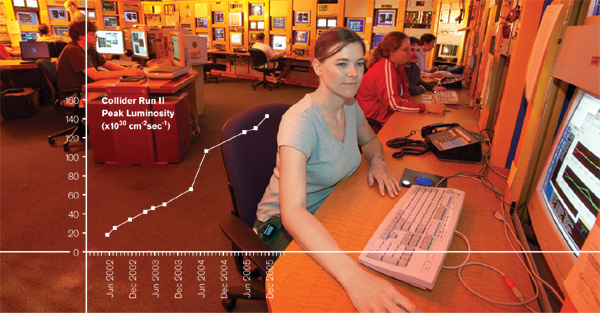A bright machine
 Photo: Reidar Hahn, Fermilab |
The Fermilab Tevatron achieved a world-record peak luminosity, or brightness, in colliding protons and antiprotons on October 4, 2005. The luminosity of 141x1030 cm-2sec-1 is about four times the luminosity achieved three years ago, and more is expected to come.
 |
To maximize the potential for scientific discovery, accelerator experts improve and tune their machines to produce the largest number of collisions per second, a rate known as the peak luminosity of a particle-collider machine.
The Tevatron record surpasses that set in December 1982 by the ISR collider at CERN, which collided protons on protons. The ISR achieved a peak luminosity of 140x1030 cm-2sec-1 at a collision energy of 62 GeV.
Why did it take 23 years to break the ISR record? Beams of antiprotons are much harder to produce than protons, and the Tevatron operates at a much higher collision energy of 1960 GeV. The Tevatron record is tied to the startup of a new technique to cool antiproton beams, which makes the beams more concentrated.
Kurt Riesselmann
Click here to download the pdf version of this article.






